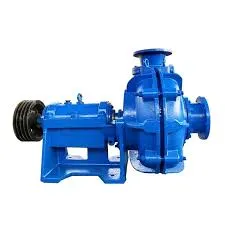English
- Afrikaans
- Albanian
- Amharic
- Arabic
- Armenian
- Azerbaijani
- Basque
- Belarusian
- Bengali
- Bosnian
- Bulgarian
- Catalan
- Cebuano
- Corsican
- Croatian
- Czech
- Danish
- Dutch
- English
- Esperanto
- Estonian
- Finnish
- French
- Frisian
- Galician
- Georgian
- German
- Greek
- Gujarati
- Haitian Creole
- hausa
- hawaiian
- Hebrew
- Hindi
- Miao
- Hungarian
- Icelandic
- igbo
- Indonesian
- irish
- Italian
- Japanese
- Javanese
- Kannada
- kazakh
- Khmer
- Rwandese
- Korean
- Kurdish
- Kyrgyz
- Lao
- Latin
- Latvian
- Lithuanian
- Luxembourgish
- Macedonian
- Malgashi
- Malay
- Malayalam
- Maltese
- Maori
- Marathi
- Mongolian
- Myanmar
- Nepali
- Norwegian
- Norwegian
- Occitan
- Pashto
- Persian
- Polish
- Portuguese
- Punjabi
- Romanian
- Russian
- Samoan
- Scottish Gaelic
- Serbian
- Sesotho
- Shona
- Sindhi
- Sinhala
- Slovak
- Slovenian
- Somali
- Spanish
- Sundanese
- Swahili
- Swedish
- Tagalog
- Tajik
- Tamil
- Tatar
- Telugu
- Thai
- Turkish
- Turkmen
- Ukrainian
- Urdu
- Uighur
- Uzbek
- Vietnamese
- Welsh
- Bantu
- Yiddish
- Yoruba
- Zulu
Telephone: +86 13120555503
Email: frank@cypump.com
Aug . 12, 2024 17:16 Back to list
Understanding the Benefits and Applications of Double Suction Pumps in Modern Industrial Systems
Understanding Double Suction Pumps A Comprehensive Overview
Double suction pumps are a specialized type of centrifugal pump predominantly used in various industrial applications. These pumps are designed to handle large volumes of liquid and provide a high flow rate, making them invaluable in sectors such as water treatment, fire protection, and irrigation.
Design and Functionality
The hallmark of a double suction pump lies in its unique design. Unlike traditional single suction pumps that draw fluid from one side, double suction pumps feature an impeller with two inlets. This design allows for the fluid to be drawn in from both sides, effectively balancing the hydraulic forces acting on the impeller. As a result, these pumps experience reduced axial thrust, leading to enhanced operational efficiency and prolonged service life.
One of the critical advantages of double suction pumps is their ability to manage high flow rates. They are typically employed in applications requiring the movement of large volumes of water or other fluids, making them ideal for municipal water supply systems, large-scale irrigation projects, and industrial fluid transport.
Applications
Double suction pumps are versatile and can be found in numerous applications. In water treatment facilities, these pumps play a vital role in transferring raw water from sources like rivers and lakes to treatment plants. They are also used to circulate treated water through distribution systems to ensure a reliable supply to residential and commercial areas.
In firefighting systems, double suction pumps are essential for providing the necessary water pressure to fight fires effectively. Their high flow capacity can quickly deliver large volumes of water, crucial for combating significant fire outbreaks.
double suction pumps

Moreover, in the agricultural sector, these pumps are commonly used for irrigation purposes, facilitating the efficient movement of water across vast fields. They can be customized to meet specific requirements, such as varying flow rates and pressures, which makes them suitable for different farming operations.
Advantages
The double suction pump's design offers several benefits over its single suction counterparts. The reduced axial thrust helps to diminish wear and tear on the bearings and other components, leading to lower maintenance costs and longer service intervals. Additionally, the balanced hydraulic forces contribute to a more stable and quieter operation, reducing vibrations that can affect surrounding equipment and infrastructure.
Another significant advantage is their efficiency in handling large volumes of liquid. With the ability to move substantial amounts of fluid at lower energy consumption levels, double suction pumps can be more cost-effective in the long run. This efficiency makes them a preferred choice for industries looking to optimize their energy use while maintaining high performance.
Challenges and Considerations
Despite their numerous advantages, double suction pumps are not without challenges. They require careful installation and alignment to ensure optimal performance. Improper installation can lead to increased vibrations and premature wear.
Furthermore, while these pumps are incredibly efficient, they are not always the best choice for applications involving highly viscous fluids or those containing solids, as this could lead to clogging and operational issues.
In conclusion, double suction pumps are an integral part of modern fluid handling systems, offering a blend of efficiency, reliability, and versatility. Understanding their design, applications, advantages, and considerations is crucial for industries seeking to employ these powerful pumps effectively. As technologies continue to evolve, the role of double suction pumps will likely expand, adapting to meet the changing needs of various sectors.
-
Horizontal Split Case Pump with GPT-4 Turbo | High Efficiency
NewsAug.01,2025
-
ISG Series Pipeline Pump - Chi Yuan Pumps | High Efficiency, Durable Design
NewsAug.01,2025
-
Advanced Flue Gas Desulfurization Pump with GPT-4 Turbo | Durable & Efficient
NewsJul.31,2025
-
ISG Series Vertical Pipeline Pump - Chi Yuan Pumps | Advanced Hydraulic Design&Durable Construction
NewsJul.31,2025
-
ISG Series Vertical Pipeline Pump - Chi Yuan Pumps | Energy Efficient & Low Noise
NewsJul.31,2025
-
pipeline pump - Chi Yuan Pumps Co., LTD.|High Efficiency&Low Noise
NewsJul.31,2025










